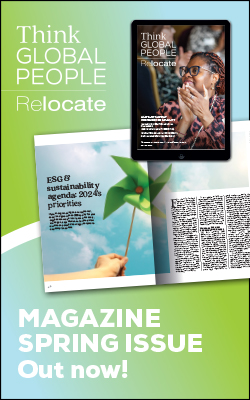INSEAD study highlights MENA’s digital economy skills gaps
UAE, Qatar, Saudi Arabia and Bahrain fair best in INSEAD’s regional talent competitiveness index, which ranks countries in North Africa and the Middle East (MENA) on their ability to attract, grow and retain talent.

Capitalising on MENA's youth dividend
The MENA region makes relatively high levels of investment in education compared to the global average (18% of total government spending versus the global average of 14%). However, the report notes MENA’s particular challenges in relation to talent competitiveness.These include a young population, where more than half the region’s population is aged under 25, and the world’s highest regional youth unemployment rate.The region also has high public sector employment (30% versus 10% globally), rigid labour market regulations and a gender gap that means men are three times more likely to participate in the workforce than women.Dr Bruno Lanvin, executive director – global indices, INSEAD, said: “From a demographic point of view, the MENA region is younger than the rest of the world, which is both a blessing and a challenge. On one hand, there is energy, creativity and ambition in the new generation; on the other hand, creating enough jobs for them is an urgent necessity.“Technology is a critical dimension of this challenge as the jobs of the future need to be thought of in areas such as artificial intelligence, virtual and augmented reality, and life-long continuous upskilling.“Now is the time for governments and business in MENA to implement the required policies to take advantage of the opportunities at hand to support entrepreneurship, competitiveness and innovation across the whole region.”Related reading:
Economic uncertainty taking its toll on UAE expats
AIRINC data sees rents fall, but energy prices rise in UAE
Global slowdown pegs expat salaries in Gulf
MENA's digital economy
MENA’s digital economy stands at 4 per cent of GDP, half of the US level (8%) and lagging behind the EU (6%). Embracing technology, supporting SMEs, and providing affordable and high-quality access to the internet are futher key recommendations INSEAD makes in the report to improve talent competitiveness on a global and regional scale.Selim Eddé, head of public policy at Google MENA, a partner for the report, said: “The Middle East and North Africa has immense potential in its talent and young population. Major factors such as embracing technology, enabling the SME ecosystem to thrive, and providing equal access and connectivity, are key ingredients that would help Arab countries leverage the fourth industrial revolution with the many opportunities that lie within the region.”Action required to create sustainable jobs
Patricia McCall, executive director, Centre for Economic Growth, added: “With the highest youth unemployment rates in the world, our region’s biggest economic challenge is the creation of productive and sustainable jobs for our youth."A key requirement will therefore be developing the talent of the next generation to be competitive for the global economy. This important report enables leaders from the public and private sector to take the targeted actions required in order to achieve this strategic goal.”Follow the links for more HR and talent management news and features.
Access hundreds of global services and suppliers in our Online Directory
Get access to our free Global Mobility Toolkit

©2024 Re:locate magazine, published by Profile Locations, Spray Hill, Hastings Road, Lamberhurst, Kent TN3 8JB. All rights reserved. This publication (or any part thereof) may not be reproduced in any form without the prior written permission of Profile Locations. Profile Locations accepts no liability for the accuracy of the contents or any opinions expressed herein.
































